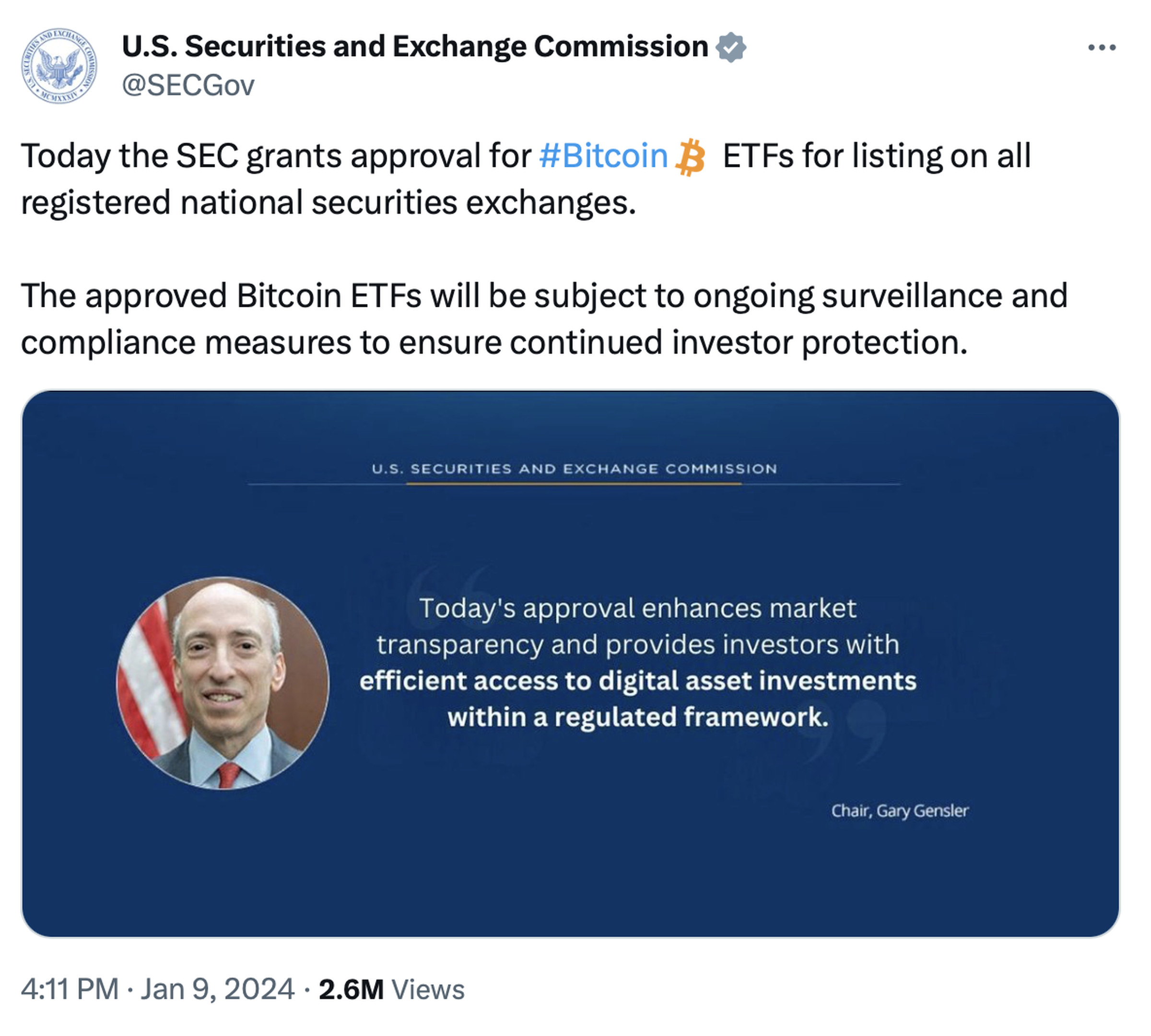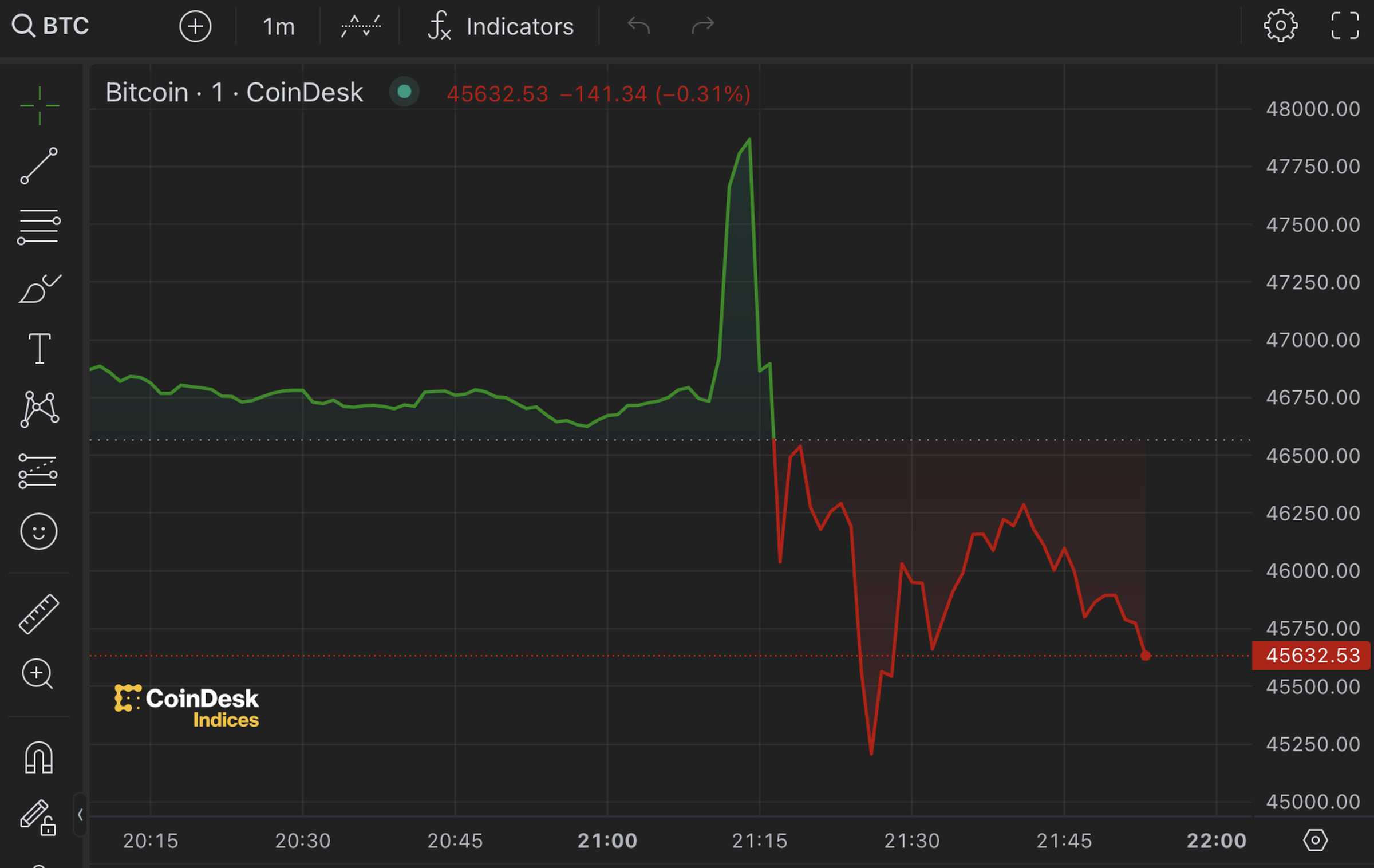The official SEC account posted a statement from Gary Gensler saying the long-awaited approval arrived, but then Gensler’s X account said it was a hoax.
Share this story

The Securities and Exchange Commission’s official social media account on X (formerly Twitter) posted a notice on Tuesday evening falsely claiming it had approved listings for Bitcoin exchange-traded funds, or ETFs, which has since been deleted. Moments later, SEC Chair Gary Gensler said in a post on his own account that the agency’s account was “compromised, and an unauthorized tweet was posted.”
The SEC followed up with a post reiterating Gensler’s statement. A spokesperson for the SEC also confirmed to CNBC that an “unknown party” had accessed its account.
Late Tuesday night, an unsigned post sent from the @Safety account said, “Based on our investigation, the compromise was not due to any breach of X’s systems. but rather due to an unidentified individual obtaining control over a phone number associated with the @SECGov account through a third party.”
Last week, a report from Bleeping Computer highlighted how hackers are increasingly targeting government or business profiles on X to promote crypto scams and phishing sites. Access to these accounts, which are identifiable by their gold (for business) and gray (for government profiles) checkmarks, are even up for sale on the dark web, according to a report from the cyberintelligence company CloudSEK.
Mandiant, the cybersecurity firm owned by Google, was just one of the high-profile accounts that had fallen victim to hackers, as its account was hijacked last week to advertise a crypto scam that drained users’ wallets. The blockchain security firm CertiK also had its account taken over earlier this week to post crypto phishing links.
The post from @Safety does not indicate X will adjust its security policies in light of these recent incidents.
The illegitimate post sent from the SEC’s account said, “Today the SEC grants approval for #Bitcoin ETFs for listing on all registered national securities. The approved Bitcoin ETFs will be subject to ongoing surveillance and compliance measures to ensure continued investor protection.” It included an image of Gensler next to the quote, but it was clearly missing any link to the SEC’s website that would normally accompany this kind of news.


Whoever compromised the SEC’s account also began liking posts from crypto-focused accounts that expressed excitement about the SEC’s false approval of Bitcoin ETFs. Even though the SEC’s fake post was only live for a matter of minutes, it still managed to trigger a steep spike in the price of Bitcoin that brought it from around $46,746 to $47,863. That price has since sunk to $45,633 at this time of writing, according to data from CoinDesk, though it’s since risen to $46,173.


Exchange-traded funds, or ETFs, are bundles of assets that work sort of like mutual funds, with shares of the ETFs trading on exchanges as stocks do. A Bitcoin ETF would make it easier for investors to speculate on the price of Bitcoin without having to hold Bitcoin directly. That also lets them avoid setting up their own cryptocurrency wallets and so on. The SEC has previously rejected all attempts at a Bitcoin ETF.
Update January 9th, 7:15PM ET: Added new information from the SEC and an updated Bitcoin price.
Update January 9th, 11:37PM ET: Added details posted by @Safety.








